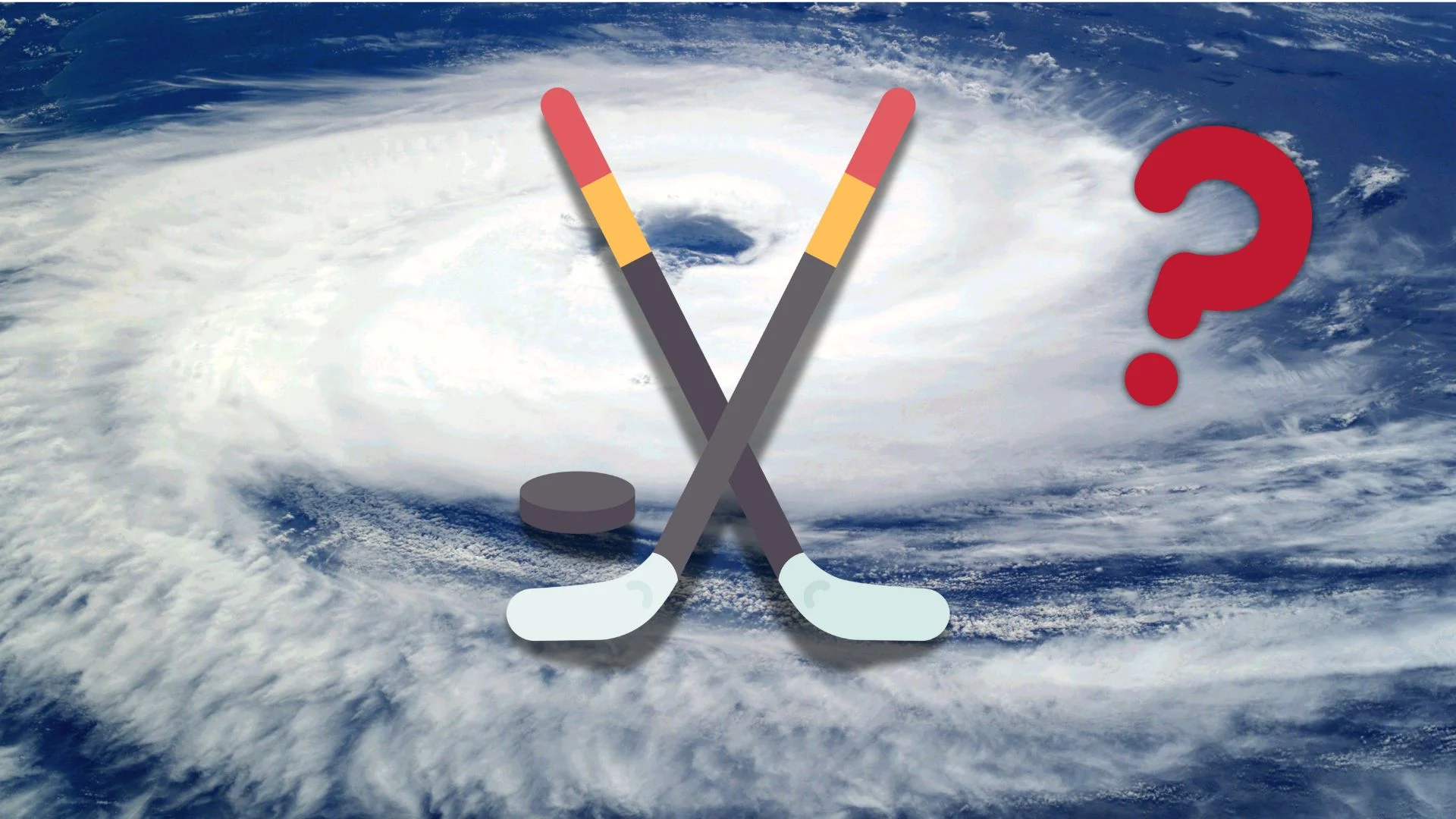
Hurricane season meets the Stanley Cup finals: Is the series at risk?
Normally, hurricanes and hockey don’t mix, as the seasons generally have little overlap, but will 2024 be any different?
In June, only a few National Hockey League (NHL) teams would genuinely have to worry about an interaction with a tropical entity.
With the distances between Edmonton, Alta., and Florida being the furthest cup final on record at over 4000 kilometres, there’s an extra day scheduled between games, marginally increasing the odds of an interaction with a hurricane.
The official hurricane season began on June 1.
2024 ATLANTIC HURRICANE SEASON: Check out The Weather Network's hurricane hub for updates on the Atlantic hurricane season.
The vulnerability of the Florida Panthers, Tampa Bay Lightning, Dallas Stars, and Carolina Hurricanes is evident by geography. How often do these hockey teams compete in the Stanley Cup Final? The Panthers have reached the final three times. Last year, a weak tropical storm in the Gulf of Mexico occurred a week before their appearance in the final.
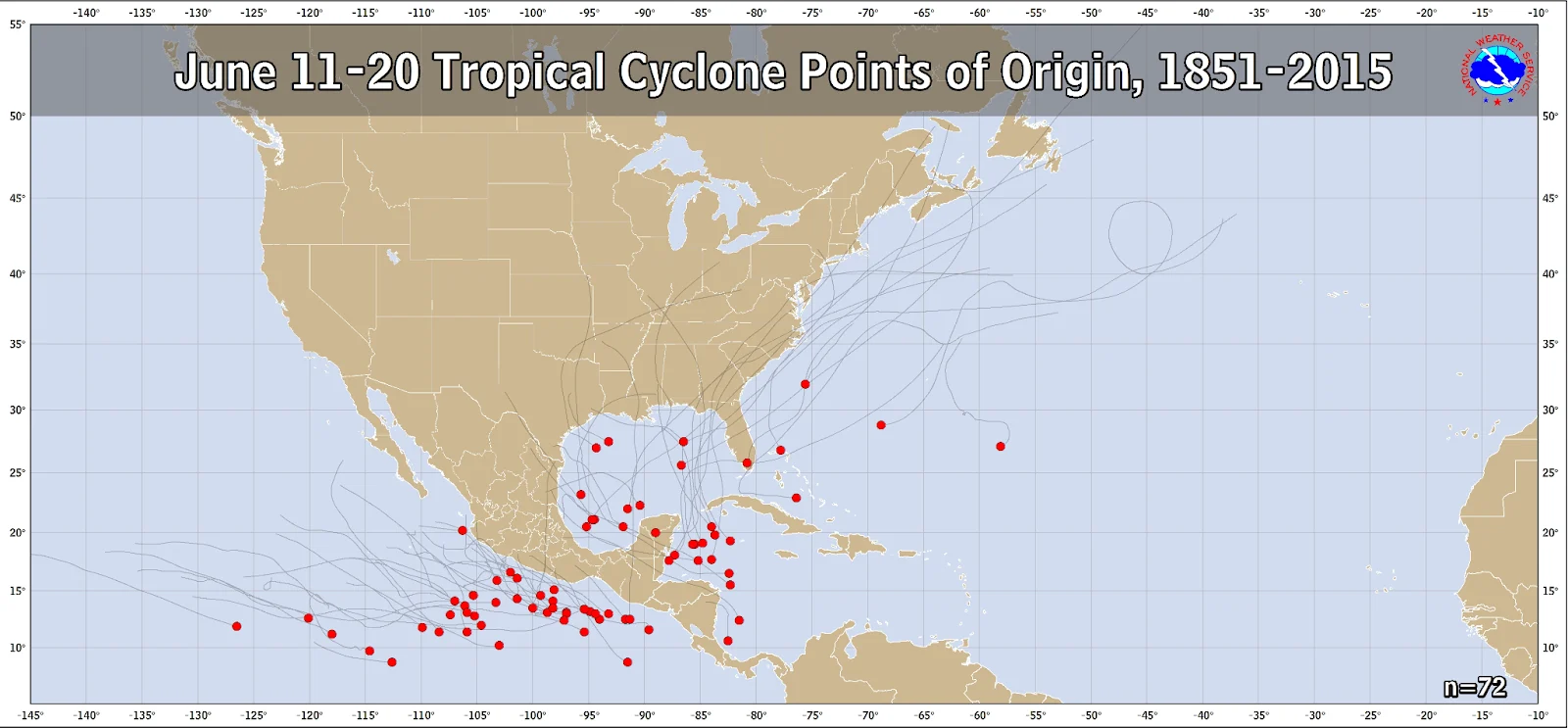
Average points of origin for tropical cyclones between June 11-20, using data from 1851-2015. (Courtesy: National Weather Service)
Dallas has reached the Stanley Cup final five times, most notably winning the Stanley Cup on June 19, 1999, while the Carolina Hurricanes have made two Stanley Cup finals; but both 2002 and 2006 were quiet tropical seasons in June.
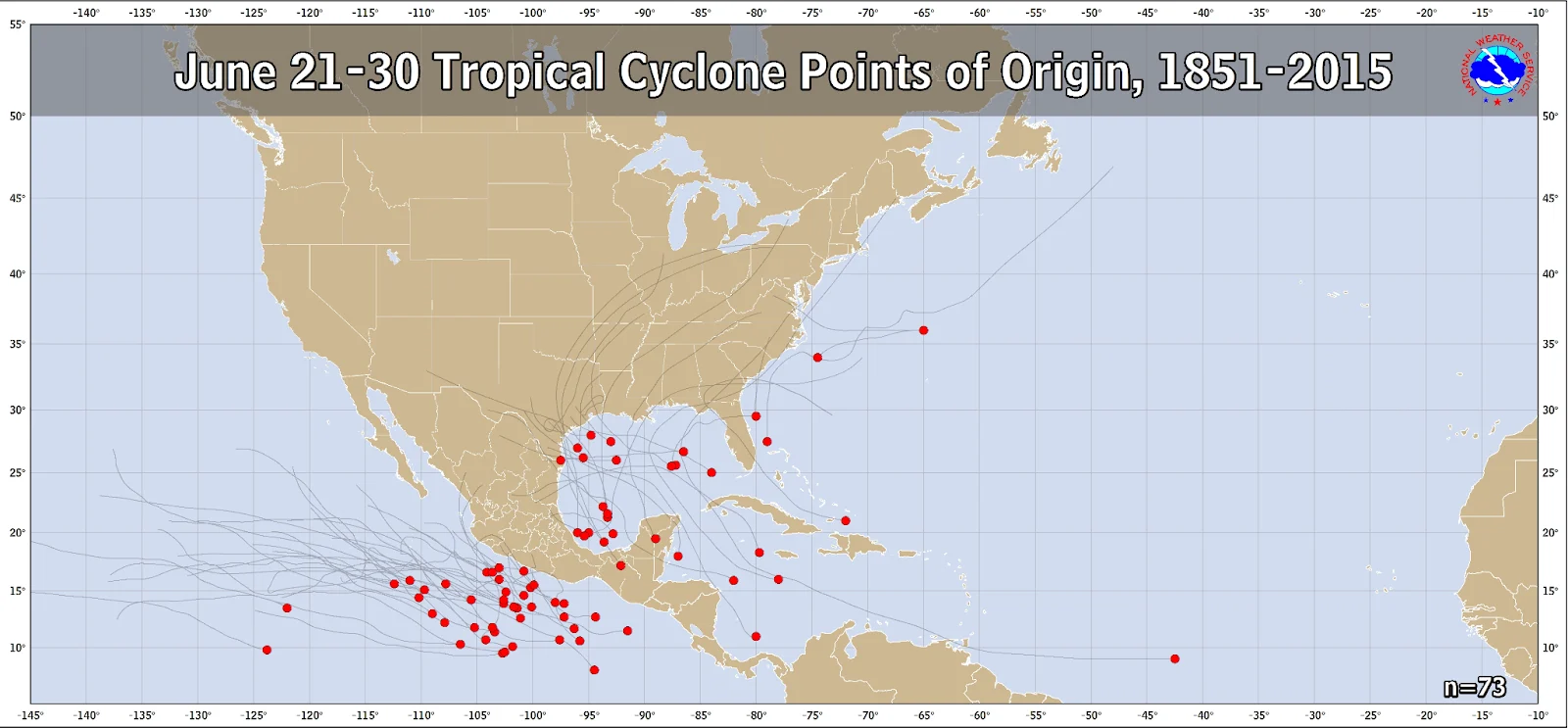
Average points of origin for tropical cyclones between June 21-30, using data from 1851-2015. (Courtesy: National Weather Service)
SEE ALSO: How hot water fuels the world’s most powerful hurricanes
In 2020, during the COVID-19 pandemic, the final series took place in September, which would have normally posed a significant hurricane risk during a hyper-active year, with both Tampa Bay and Dallas in the final. The games were played exclusively in Edmonton and Toronto, however, so it ended up not being an issue.
An average hurricane season in the Atlantic Basin brings us the first named system by June 20, the first hurricane by Aug. 11, and the first major hurricane by Sept. 1. The problem?
This season will be anything but average.
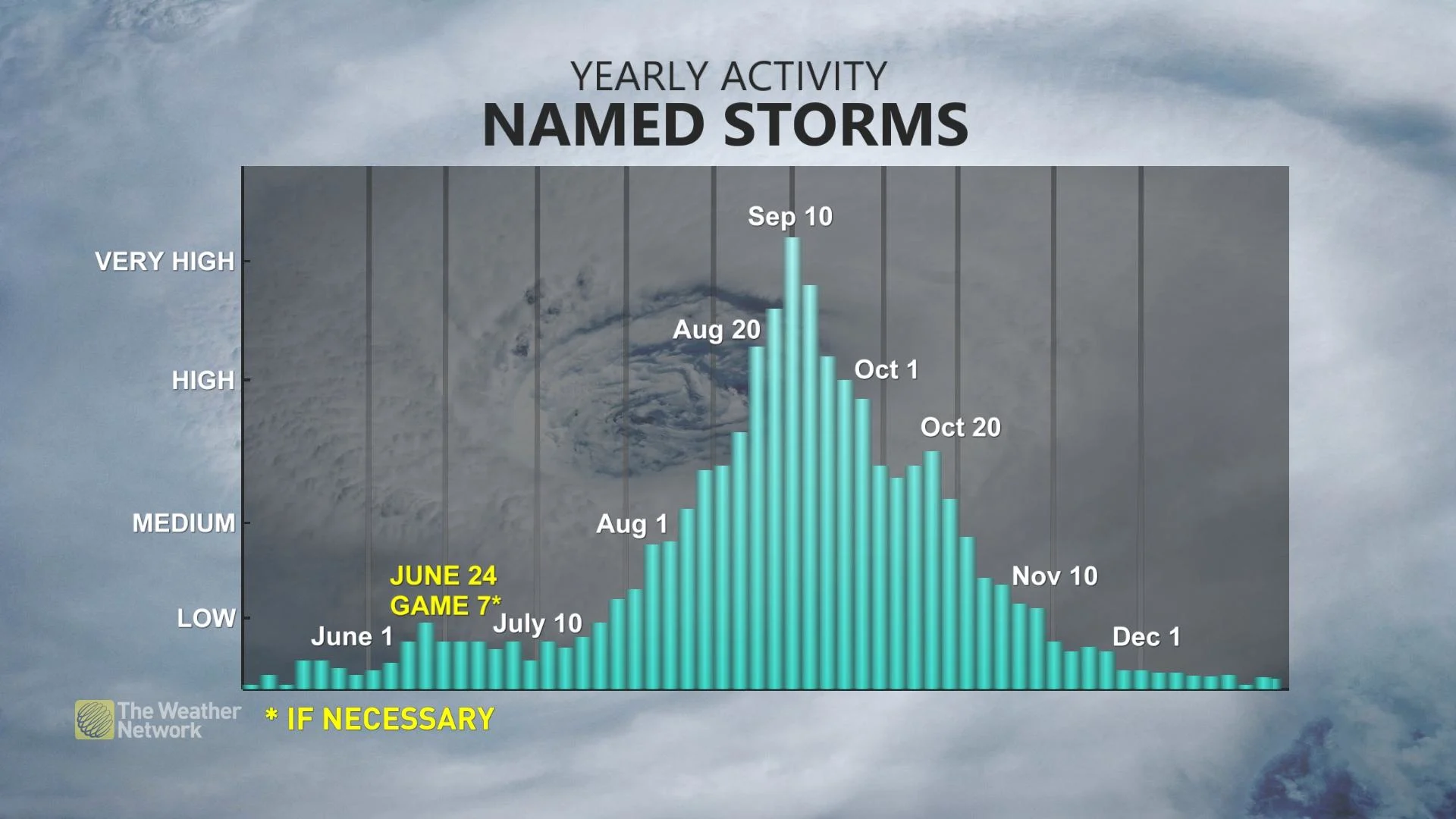
With the extra travel delays, the series may go as late as June 24 (Game 7) at the Panthers' home arena just outside of Miami, in Sunrise.
Record-breaking sea surface temperatures are heightening the risk of storm development this season, along with a favourable atmosphere for tropical development that generally occurs during La Niña.
RELATED: Experts predict an extremely active 2024 Atlantic hurricane season
Weather models
A weather model's skill rapidly drops off after ten days, but it can still be useful to indicate if tropical activity is possible rather than providing specific information on intensity and track. The latest Canadian model indicates the Gulf of Mexico might be susceptible to storm development in the third week of June, while the American counterpart shows some signs of storm organization in the Caribbean Sea late next week.
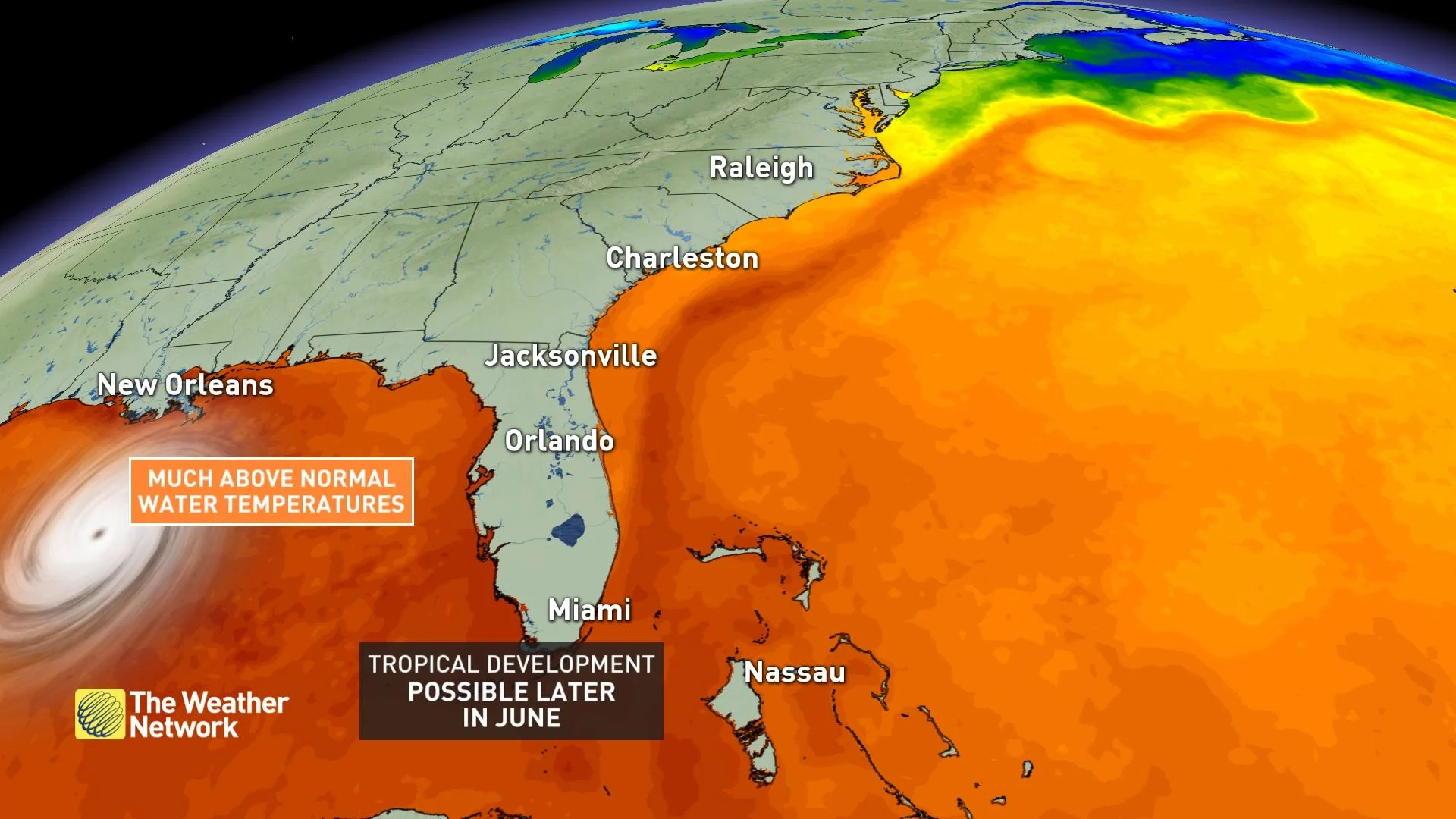
We’re likely going to see some named storms this June, but still, the odds are low that southern Florida will see a legitimate threat of tropical activity coinciding with a game.
The environment further west in the Gulf of Mexico is less hostile to storm development this time of year, so we’ll watch this area closely, while the most hostility will likely be found on the ice.










